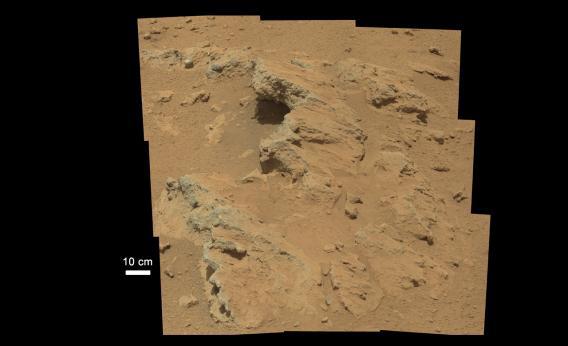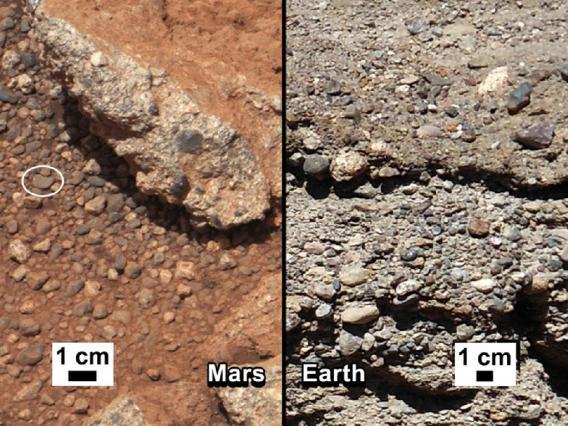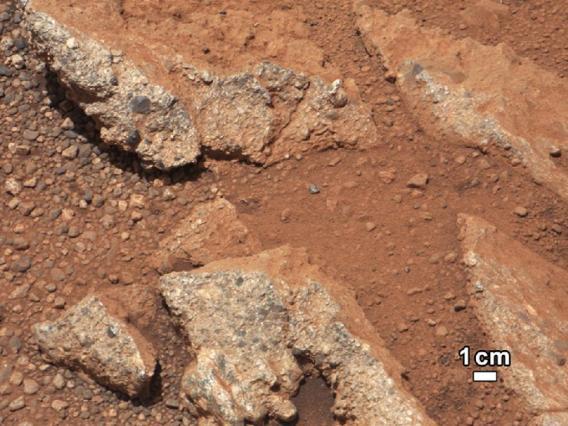Scientists have known for years that water must have once flowed on Mars. Today NASA announced that the Curiosity rover has sent back the most compelling and detailed evidence yet: the first-ever photographs of rocks composed of gravel from a streambed. The photos come from dried-up channels near the base of Aeolis Mons, the towering, 18,000-foot peak in the center of Gale Crater. From NASA’s statement on the discovery:
“From the size of gravels it carried, we can interpret the water was moving about three feet per second, with a depth somewhere between ankle and hip deep,” said Curiosity science co-investigator William Dietrich of the University of California, Berkeley. “Plenty of papers have been written about channels on Mars with many different hypotheses about the flows in them. This is the first time we’re actually seeing water-transported gravel on Mars. This is a transition from speculation about the size of streambed material to direct observation of it.”
The large size and rounded shape of the gravel indicates that it was carried long distances by the water, probably starting above the crater’s rim, in a channel called Peace Vallis, and flowing down into it. The find comes from a pair of angled rock outcroppings, called “Hottah” and “Link,” which apparently formed the foundation of ancient streambeds in an alluvial fan.

NASA/JPL-Caltech/MSSS
It’s too early to tell whether those fast-flowing streams ever housed living organisms, but it’s at least theoretically possible. Curiosity’s ultimate destination remains Aeolis Mons, also known as Mount Sharp, which contains minerals that could provide further clues as to whether there ever was life on Mars.

NASA/JPL-Caltech/MSSS
